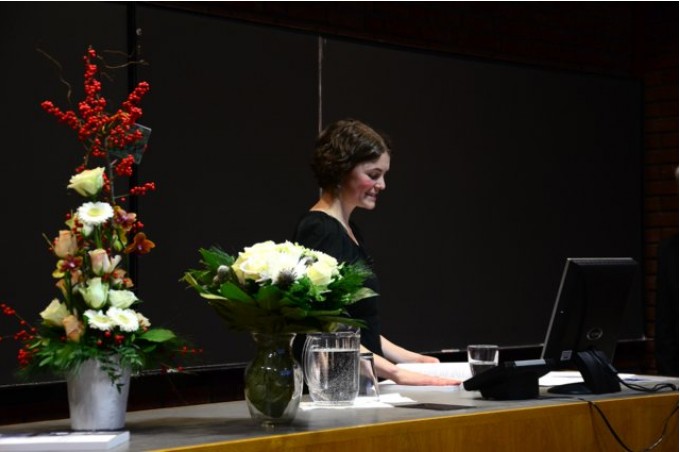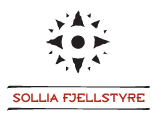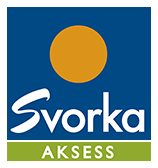Doktor Stine
 Stine Rybråten fra Søristua på Østre Vuluvollen (Wollum) er blitt Sollias første doktor. Doktor phil. altså, ikke lege, men en viteneskaplig doktor. Oppvekst i fjellbygda Sollia, jobb og studieopphold både på Svalbard, Grønland, Canada og Finnmark resulterte sist uke i en overbevisende disputas.
Stine Rybråten fra Søristua på Østre Vuluvollen (Wollum) er blitt Sollias første doktor. Doktor phil. altså, ikke lege, men en viteneskaplig doktor. Oppvekst i fjellbygda Sollia, jobb og studieopphold både på Svalbard, Grønland, Canada og Finnmark resulterte sist uke i en overbevisende disputas.
En disputas vil si at master Stine forsvarte sin avhandling for graden ph.d.ved Sosialantropologisk institutt med tittelen
This is not a wilderness. This is where we live." Enacting nature in Unjárga-Nesseby, Northern Norway.
Samme dag avholdt hun prøveforelsning med tittelen
"The politics of wilderness: Comparative approaches to governing natures"
Bedømmelseskomitéen bestod av
Førsteopponent: Dr. Hugh Beach, Professor at the Department of Cultural Anthropology and Ethnology, Uppsala University
Andreopponent: Dr. Simone Abram, Social Anthropologist and Reader in Tourism and Cultural Change at Leeds Metropolitan University.
Tredje medlem og administrator: Dr. Marit Melhuus, Professor ved Sosialantropologisk institutt, Universitetet i Oslo
Veilederne for Stine har vært Marianne Lien,
- Sosialantropologisk institutt, Universitetet i Oslo
- Dr. Grete K. Hovelsrud, Nordlandsforskning og CICERO – Senter for klimaforskning
Populærvitenskapelig sammendrag
På hvilken måte inngår natur i folks hverdagsliv i en Finnmarkskommune i det 21. århundre? Aktualiserer vår pågående klimaendringsdebatt natur på nye måter? Hvordan kan et lite insekt som bjørkemålerlarven si oss noe om flyt av kunnskap og illustrere koblingen mellom det lokal og globale? Dette er spørsmål som berøres i avhandlingen “This is not a wilderness. This is where we live.” Enacting nature in Unjárga-Nesseby, Northern Norway.
Basert på 12 måneders feltarbeid i Unjárga-Nesseby, en sjøsamisk kommune i Finnmark, viser Stine Rybråtens avhandling hvordan natur skapes gjennom praksiser. I stedet for å presentere hva natur er, viser Rybråten hvordan natur blir til.
Med utgangspunkt i ulike høstingsaktiviteter argumenterer Rybråten for at Unjárga-Nesseby rommer et mangfold av ulike naturer, som kontinuerlig skapes gjennom et innbyrdes samspill mellom mennesker og landskap, inkludert dyr, planter, vær og sesongvariasjoner. I tillegg inngår også materialitet, utsagn og historier i denne produksjonen av natur.
Begrepet utmark (på samisk meahcci) er sentralt som samlebetegnelse på områdene Unjárga-Nessebys innbyggere benytter seg av i sine naturbaserte aktiviteter. Utmarka representerer ikke det som er utenfor det kjente og nære, men består i stedet av verdsatte høstingsområder som folk føler seg hjemme i. Denne forståelsen av utmark bidrar til å bryte ned skillet mellom ‘hjemsted’ og ‘villmark’, ‘kultur’ og ‘natur’, ‘det tamme’ og ‘det ville’. I tillegg åpner høstingsaktivitetene i utmarka, råvarene de resulterer i og måltidene disse råvarene senere inngår i, for diskusjoner om identitet, tilhørighet og kunnskap.
Med sin beliggenhet i Øst-Finnmark representerer Unjárga-Nesseby nordområdene, en viktig region i klimaforskningssammenheng. Rybråtens avhandling viser hvordan klimaendringsdiskursen utgjør en betydningsfull kontekst for hvordan pågående endringer i værforhold og landskap erfares og forklares. Et omfattende utbrudd av bjørkemålerlarver og påfølgende endringer i utmarka danner utgangspunkt for Rybråtens undersøkelse av kunnskapsflyt og forbindelse mellom det partikulære og det abstrakte, i form av spesifikke naturpraksiser og overordnede forståelser av natur og klima slik de utfolder seg og inngår i klimaendringsdebatten.
Rybråtens avhandling bringer ny etnografisk kunnskap om menneske-natur-relasjoner i Norge og Arktis, og bidrar til antropologiske debatter om natur, domestisering, klimaendringer og kunnskap.
Vitenskapelig sammendrag
Throughout the history of anthropology as an academic discipline, the concepts of nature and culture have been essential to anthropological research and theoretical development. During the last decades, the nature-culture divide has been critically examined within anthropology as well as in other disciplines. The increasing global challenges of aggregated environmental threats have initiated a renewed interest in nature as a source of anthropological investigation. Stine Rybråten’s thesis “This is not a wilderness. This is where we live.” Enacting nature in Unjárga-Nesseby, Northern Norway, demonstrates how nature is best understood in the making.
Rather than stating what nature is, Rybråten’s thesis investigates how nature comes into being through practice. Based on 12 months of field research in Unjárga-Nesseby, a coastal Sámi municipality in Finnmark, the northernmost county of Norway, Rybråten explores peoples’ nature practices and the way these multiple activities relate to knowledge, identity and belonging.
By combining phenomenological perspectives with a material semiotic approach, Rybråten shows how entanglements of biosocial relations, time, weather and materiality are involved in the various Unjárga-Nesseby nature practices carried out throughout a year. In these complex practices different nature realities are enacted into being.
The Norwegian term utmark (in Sámi meahcci, in English outfields) constitutes one of the thesis’ central concepts, as it is the expression used by Unjárga-Nesseby inhabitants to denote the general areas in which their nature-based activities take place. Instead of representing what is outside near and known locations, the utmark is where valued resources are to be found, comprising the diverse natures where people feel at home. This understanding of utmark challenges the divide between ‘home place’ and ‘wilderness’, ‘culture’ and ‘nature’, ‘the tame’ and ‘the wild’, and provides an entry-point for reconsidering the grand narrative of domestication.
Located in the Arctic, Unjárga-Nesseby belongs to a region of particular relevance to climate change research. In Rybråten’s study, everyday activities and conversations related to the landscape, as well as ways through which change is perceived and explained, serve as a basis for exploring how the notion of climate change actualizes nature in new ways. With an extensive moth larvae outbreak as a point of departure, Rybråten investigates the fluidity of knowledge and the linkages between the particular and the abstract, i.e. between specific nature practices and universalized understandings of nature and climate, and how they unfold in a context of climate change related debates.
Rybråten’s thesis contributes to the ethnographic knowledge on human-nature relations in Norway and the Arctic, and engages with anthropological debates on nature, knowledge, domestication, climate change and scale.



















